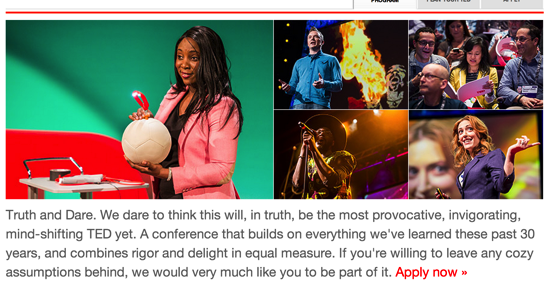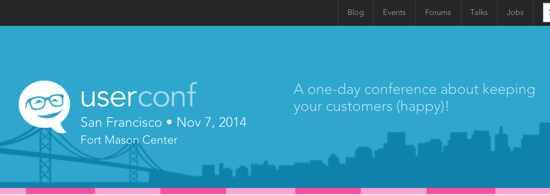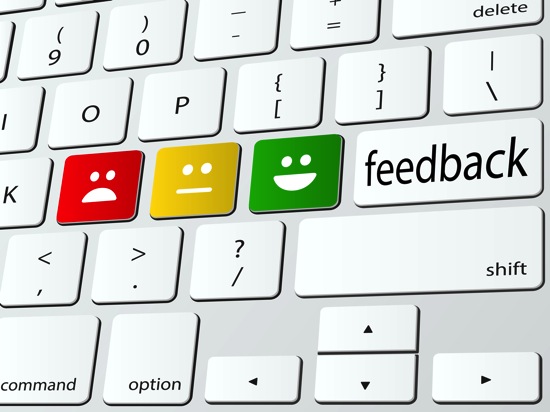Skift Take
25 techniques to influence your guests and make sure your event is a success
How do you convince people to attend your event? This article offers .

I’ve always researched the topic of influence and persuasion in marketing. I can call it a passion, possibly the reason why I studied marketing to begin with. When I read Kelvin’s post on persuasion for event managers, I had to add my two cents.
The following post is firstly the result of the takeaways of two masterpieces:
– Dale Carnegie’s How to Win Friends and Influence People
– Robert Cialdini’s Influence: Science and Practice
Moreover it offers the results of my research within the topic of influence in online marketing. Several of the insights come from personal experience. Having provided thousands of customers effective websites through our WordPress Event Theme Shop, there are some inevitable learnings I am happy to share. Other come from the great insights CopyHackers offer.
A Word About the Authors
Carnegie and Cialdini are very different but alike. They are pioneers, innovators. They are among the first to have theorised something we all understand but can’t explain.
We all agree some people are more capable to make their message heard. We follow them, we buy their product, we vote for them and most of the times we don’t even realise why. Carnegie and Cialdini uncovered anecdotally and scientifically what that hidden power is made of.
Most marketers who read the above books thought to become millionaires and bend thoughts like Jedis, but the truth is that the science behind influence requires continuous application and practice. It also requires a great product, service or event.
If in fact the object of your persuasion discovers that your event is horrible, it is highly unlikely they will come back. This is a basic rule of doing business.
A Note for Event Professionals
What follows are some tactics that can increase the effectiveness of your marketing. Some of these happen during the event and they revolve around customer service.
I’ve witnessed countless examples in our industry where we think that marketing is a pre-event activity. I don’t agree. Marketing happens before, during and after and event.
Staff/Attendee interactions are core evaluation components of our product offering as events are co-created experiences. So are communications happening after the event.
Limiting these tactics to only pre-event call to actions or fancy websites is a weak strategy.
How to Read this Post
This post is made of three parts.
Part I covers some of the points that Dale Carnegie offers in his work.
Part II looks at the principles that Cialdini discusses.
Part III encompasses some of the takeaways of various psychology and influence techniques available out there.
The application of each technique won’t be general, it will be specific for event professionals.
Be aware that only some of the tips will relate to your specific event. Do not expect all tactics to be relevant. Make sure to further investigate each theory and tactic and to read the books and resources mentioned.
Part I – Carnegie
Make Your Attendees Feel Important

One to the most eye opening theories of Dale Carnegie’s work revolves around our crave for appreciation. Few realise our compulsive need for a pat on the back. This underlying concept shapes a big chunk of Carengies’ book.
The first commandment to win attendees’ favour is to make them feel important. While this has become a cliche in business, I have seen it little times implemented correctly.
We have a number of ways to make our guests feel important. The most important being the need for superior customer service and support. We often forget about how important service is and often cut back on it when budgeting for our events.
Think about how you can make your prospective or current attendees important by:
– opening all channels on social media for customer support. Answer promptly and directly.
– make sure to be reachable via email and value each and every email you receive. Respond quickly and making sure you address the person by their first name (more on this later)
– train your staff to address your customer in the most helpful and respectful way during, before and after the event.
Focus on Attendee Needs

Too often we focus planning events on the grounds of our needs, instead of taking advantage of the bigger opportunity to put our customers needs first.
Prioritizing needs is an essential practice of every event planning cycle. Yes, stakeholders are equally important, but there is no event without attendees.
It happens very often that sponsors are prioritised against attendees. We need to change that.
Think why someone should purchase a ticket for your event? What is the reason number one to do so? Is it education? Is it networking? Is it entertainment?
Think like a prospective customer and fill in the blanks:
– I want to attend an event that helps me ______
– After attending this event I will be more _______
– I want to be at a conference that __________
Once you’ve identified the core need of your attendee, prioritise it in all your communication.
Be Genuinely Interested in Your Attendees

One of the most overlooked yet incredibly powerful weapons Carnegie offers to the reader is interest.
Let me ask you, do you know your attendees? And by that I mean do you actually know who they are? Do you know their names? Do you talk to them at the event?
Or are you too busy reflecting the image of the stressed event planner? The stressed individual who cannot afford to have a decent conversation because ‘there is a lot going on’?
Of course it is not always possible to show interest in all our attendees. Yet social media offers a great opportunity to get to know more about the people behind a ticket purchase.
Larger events can count on a great deal of information about attendees preferences, history education, interests, hobbies. Try to dissect your customer base and to genuinely approach this task with no hidden agendas.
I still remember when I was greeted at an event by an event planner with a cup of espresso as they knew how important coffee was to me.
It’s All About the Name

If you’ve met me around the world, you will know I am awful with names. I have a visual memory and I have to see a name written before I actually remember it. This is not good as names are really important.
I started working on improving name management at events when I realised how upset I got when someone called me Julian or Jules. Calling someone by first name has a unique brain activation function you want to take advantage of.
That is also why I think Kelvin’s tip on improving name badges captivated the attention of several planners.
Give prominence to the first name on your badges. Make it as visible as possible. It is your way to show that you know attendees by their first name.
Encourage Attendees to Talk About Themselves

Encouraging attendees to talk about themselves has a positive impact on how they perceive your event.
There are a number of ways to do that:
You can establish ad hoc social networks for them to describe who they are and why they are there.
You can invite them to join the event mobile app and fill in profiles.
You can plan specific sessions where attendees have the ability to introduce themselves and meet other attendees. Speed networking sessions but also highly educational sessions where discussion happens in groups really help in conference environments.
You can engage them through direct response software. Asking what do attendees think is the most powerful weapon to win their preference. Even if the response is somewhat negative. Polling and Q&A tools are instrumental in this sense. Make good use of them.
Ask About Interests, Preferences and Expectations

Showing appreciation for your audience means getting to know them. I talked earlier about how crucial it is to show genuine interest and focus on their needs. In order to do that, you have to ask for all of the above.
The simple gesture of asking will, according to Carnegie, play a key role in winning the favour of your audience.
When it gets to events there are a number of opportunities to ask for interests, preferences and most of all expectations. The latter being one of the strongest pointer for a successful event planning.
Whenever I’ve planned an event, I’ve tried to ask attendees as much information as possible in regards to what they expected from it. You can use a variety of tools to achieve that.
From registration forms to polls, the tech tools available to ask questions are several.
Avoid Arguments

If you want to struck a chord with your audience, remember to manage potentially explosive situations correctly.
Carnegie stresses that avoiding arguments is paramount. Applying this concepts to events, you (or your staff) want to avoid picking up fights online and offline. I’ve seen very nasty replies on Twitter, or lately retaliation, that inevitably damage a brand.
Some of the tips for face to face complaint management include to stop whatever else you are doing, face the person, make little other movement, pay exclusive attention and avoid thinking about your next response.
In social media a general rule is to bring the conversation immediately offline (i.e. via email thus out of the public eye, or via phone).
Admit You’re Wrong

Another pointer that Carnegie stresses is honesty. This is by far the hardest quality to find in customer service encounters.
Sometime staff is either too proud or too scared of management retaliation to admit guilt. I’ve seen astounding word gaming where an immediate ‘sorry, we made a mistake’ was more than enough.
This is often the result of poor management style that does not enforce employees to say ‘I am sorry’ for the business.
I once witnessed an incredible speech by an hotel manager who said that they gave their staff the ability to spend up to $400 dollars to apologise for poor customer service. This is true customer culture that wins repeated business.
The Truth Is Not Enough

When you are trying to sell something, Carnegie suggests that the truth is not enough.
Of course you may have a nice event that makes attendees happy. Nonetheless Carnegies suggests that a flamboyant event that blows attendees away is much better.
Making truth more resonant and vivid, sometimes dramatised, helps to convey your message better.
Catching the attention of our attendees is becoming increasingly more difficult. With email open rates going down we need to step up reality and make it more appealing to our audience.
Part II – Cialdini
Commitment

One of my favourite insights of Cialdini’s work tells something very obvious that few realise. Once we made a decision, specially a suffered one, we stick to it, we convince ourselves that is right, even if it is quite the opposite.
You probably have met that friend who researched the purchase of their car for days, checking emissions, reading magazines, doing tons of test drives. Once they made the purchase it is likely they will brag about it for a good couple of months. Showing commitment to their purchase.
If you’ve done a good job with selling a ticket to a prospective attendee, now it is a great time to take advantage of their commitment to their purchase.
Ask them to show the world what great decision they made. Ask them to share it with their friends by means of social networks or email.
Ask them to convince their friends that it is a great choice to purchase a ticket and receive a discount or special VIP treatment in return.
This is also a great time to upsell more services. Airlines are great at doing this.
Social Proof

Probably one of the most famous concepts Cialdini discussed is social proof. In essence we tend to do something if a large number or important people are doing it.
In an event context there are number of ways to show social proof.
One of the biggest drivers for ticket sales is seeing who else is coming to the event. Most registration providers offer ways to display the attendee list. Listing names and companies, sometimes allowing attendees to always sync social profiles is incredibly powerful to display proof that the event is indeed popular within a specific peer group.
Displaying numbers of following on social networks may also have an impact on prospective attendees not sure of your event credibility. Badges with Twitter followers, Facebook likes, Google +1s and the likes can deliver the safety needed to mitigate the ticket purchase risk. Hashtags are also powerful vehicles of social proof, making others realise who is talking about the event.
Testimonials from previous edition attendees, even more powerful if video is involved, play a great role in creating social proof.
Sponsors are another big factor influencing the undecided attendee, if in fact they invested money in our event, it should definitely be good.
Liking

We tend to trust people like us and that we like. Cialdini reinforces that people similar or familiar to us are a great influencing factor.
There are a number of ways we can use liking to our advantage in events.
The typical example of this is the ‘Who should attend‘ section. This section gives an idea of the profiles the event is looking for, so that prospective attendees know that will find people like them at the event.
See this example from Forrester

Authority

This is probably the concept that support most of the industry events. We tend to be influenced by authority.
If authority is involved, we tend to say yes. This is the case for dentists selling us toothpaste.
When it gets to conferences, speakers are the prime examples of this. Same is for concerts and music festivals, the performers are the authority in entertainment.
My criticism is that often times authority is the only value proposition they have to offer.
See this example:

This is a great example of an impressive line up if you are in online marketing. Yet this is becoming not enough for the modern attendee. Relying to much on authority without designing immersive experiences cannot be enough for an industry that too often has stressed celebrity status over substance.
Reciprocity

Reciprocity is an incredibly simple concept but amazingly powerful. We are influenced by a gift or something donated to us. We actually feel obliged to reciprocate that gesture of goodwill.
I am amazed by how many event professionals get this wrong. After all, goody bags where created for that. Yet most conferences give away goody bags at the end of an event. This is incredibly wrong. You want to greet your audience with a present, you want to make sure they will evaluate the event with that present influencing the assessment.
Another interesting practice to stimulate reciprocity is by giving away content for free. Events are a goldmine of content. Involving speakers in the content game and getting that content away for free to your prospective attendees makes them feel the need to reciprocate.
Try to wrap the content up as a gift. Make it a white paper, a report or an ebook. Establish the marketing relationship by giving it away for free and you will have a customer for life.
Part III – Influence in Online Marketing
Be Pathetic

Rhetorical appeals are strong influencers. Using Ethos, Pathos and Logos to stimulate action is a tactic Greeks and Romans understood very well.
While ethos and logic are popular appeals, we often tend to forget about pathos. Establishing an emotional connection with our audience before and during the event can have a much bigger impact that we think.
Stimulating empathy in the message of our marketing communications will move our audience to act. We can stimulate positive feelings such as passion or emotion but also negative feelings such as anger.
This is especially valid if you work with fundraising and charity events where you need to move the audience towards a cause.
See this example from TED 2015:

This is a very passionate appeal that would resuscitate even the most stubborn skeptic. It also plays with another concept Cialdini discussed, scarcity (i.e. apply now).
50 Milliseconds to Impress

This is the amount of time it takes to convince the visitor of a website to take action. Research says.
Despite we like to think that our audience will read all our 10pt size ‘Why You should Attend’ section, truth is that by a split second they would have already formed an opinion.
Therefore clarity and visual cues become incredibly important in influencing such a fast decision. If your website communicates clearly what your event is about in a beautiful design, by means of the halo effect that liking will spread to other areas of the website.
All of a sudden the speakers, the venue and even the expensive price of your gig will be positively perceived by the audience.
Choose Colours Attentively

If you work with wedding planning you know how important colour schemes are to win the favour of attendees and clients.
The thing is that despite countless theories that match specific colours to particular messages, research says that colour is a very subjective matter.
We form colour perception in time, summing up the influence of our ambience to our experiences. To give you an example purple is a national colour in the UK that stimulates patriotic feelings. In Italy it is often associated with death and bad luck.
In this perspective, running A/B testing with colour schemes is essential in your communication. Test to which colour patterns your audience responds better.
It’s About You

Well, technically it’s about them. But it is about the word ‘You’.
Praised by most copywriters as the holy grail of conversion, you is one of the strongest word behind persuasive communication.
You immediately shifts the attention to the object of your communication putting them at the centre of the event.
The word you is the strongest panacea for our need to feel special, cared for, listened to and appreciated, Carnegie shared with us earlier.
Look at these examples from Ignition:

and UserConf:

While Ignition is focusing on trivial event information such as the change of venue (maybe strong of its impressive lineup), Userconf stresses immediately that the focus is ‘your customers‘ immediately connecting with the basic need of who may attend the conference on a personal level.
Satisfy Curiosity

Whenever prospective attendees pose their eyes on our marketing communication, they are pervaded by a question: ‘What is this about?’
Curiosity is extremely powerful, research says.
The more we are able to keep our audience curious the more they will be compelled to click or say yes!
Obviously there is a line that needs to be drawn where curiosity becomes annoying. Yet if well managed results can be incredible.
One example I always make is SecretCinema. They are masters in managing curiosity to stimulate action by keeping the venue and time of film screening secret.
Plausible is Better than True

I mentioned how prospective customers prefer vivid truth to boring truth. Another aspect is that customers are looking for plausibility rather than the mere truth.
It has been a technique of propaganda used since WWII.
This is by no means a suggestion to lie. In fact lies will be spotted very easily and you will be held accountable for it.
While in fact truth has the objective to inform, plausibility has the mission to convince. Human beings are not made to make complex decisions. In fact we break down decisions in smaller chances, so we can take shortcuts.
By giving plausible facts that do not get too much into details we can help our potential customers to make a quicker decision. Making sure your plausible stories are backed up by data and commitment is called ethic, therefore handle with care.
Run Unexpected Surveys

I previously mentioned how we love to be asked questions. Surveys are actually really valuable to ease that sense of discomfort we feel after spending hundreds of dollars for a ticket.
Research showed that post purchase surveys are extremely powerful to mitigate risk or negative purchase decisions.
Placing a survey right after a ticket has been purchased can help to establish a direct relationship with your customer and manage their expectations for the event. It shows you care for them and their investment and it persuades them that the experience will ultimately be amazing.
Be Bizarre

We know how marketing works. We almost learned all the lingo just by being customers.
Trigger Words such as ‘Save‘, ‘Free‘ or ‘Buy Now‘ are loosing the effect they used to have. We are surrounded by the same messages all over again.
Originality and bizarreness can actually capture the attention of our audience. While by itself it won’t persuade to action, it will keep the potential customer alerted about what we have to say.
Seth Godin knew this very well when he named his book ‘Purple Cow’. Common quickly becomes boring, standing out with an unexpected twist in your event concept or marketing could be a bulletproof hook to captivate the attention of your audience.
Make a List

Lists are powerful. You know that if you read this blog. There is something magic (and not so magic) about them.
Lists are a great way to make your target audience aware of your event. What is the event about? Why should people attend? The answers to these questions are all listable.
At the same time there is a high demand for clarity and actionability in lists. Too generic lists will just be perceived as a waste of time.
Here is a great example of a ‘top 10 reasons why you should attend‘ sections.
Disrupt, Then Reframe

You have to read this incredible study about how members of a local community were asked for donations to charity.
Experimenters went door to door asking for donations. In the first batch of houses they asked for a donation saying ‘It’s 3$, it’s a bargain’. In the second instance, they said ‘It’s 300 pennies, it’s a bargain’.
By doing so they disrupted the common expectation of a dollar amount quickly reframing it as a ‘bargain’. Using pennies obtained almost twice as much donations.
For us eventprofs it means that we can add small cues of disruption to how we present information (such as ticket price) to then reframe it into the usual channels. The .99 psychological barrier is a prime example of that.
You need to play carefully with disruption though as the user always expects a regular path of conversion along the funnel. Once again, handle with care.
Use Reverse Psychology

Reverse psychology or paradoxical intervention are very interesting stimuli most of us would fall for.
Let me give you an example. We get asked the question, Will You Attend every time we have to RSVP to an event.
Paradoxical intervention would suggest the negative behaviour with the result to obtain the opposite.
I could give the answer options:
– No, I don’t need this incredible networking opportunity
or
– Yes, sign me up so I can advance my career
In this scenario I am presenting the negative behaviour as an option for RSVP with the intention of stimulating a positive response. In fact most of us would opt for the second option as clicking on ‘No’ would be a big hit for our ego.
In Conclusion
I believe I’ve shared pretty much all of my learnings in online and offline marketing of the past decade. Truth is that the science of persuasion is captivating and I am sure this article will enthuse a lot of you.
Handle these predicaments with care. Do your research and test before implementing. Make sure to persuade audiences to attend great, rather than poor events.
As Cialdini would say, I am very happy to have shared all of this with you free of charge and I am sure you will reciprocate that with a share. I’d do the same for you.





